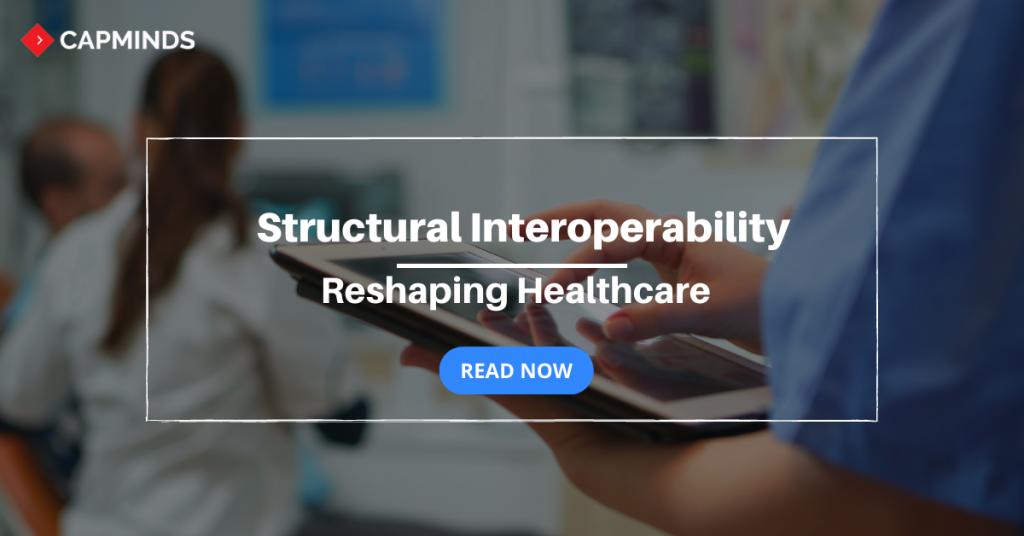Hidden Powers of Structural Interoperability in Healthcare
Today’s healthcare industry operates through a complex network of systems, databases, devices, and applications that support various healthcare processes.
As healthcare becomes increasingly digital, the need for “Interoperability” has become more pressing. It enables healthcare providers to access and share patient information across different platforms and organizations, improving patient care, better clinical outcomes, and increased efficiency.
A less interoperable healthcare system means;
- Fragmented care
- Increased medical errors
- Unnecessary costs
Thus, providers, payers, and other industry stakeholders consider achieving genuine healthcare interoperability across the care continuum a critical objective.
Interoperability in Healthcare
The HIMSS Board developed a multi-layered framework to assist healthcare professionals in evaluating their data exchange and document management capabilities. The framework comprises four tiers:
- Foundational,
- Structural,
- Semantic, and
- Organizational
Each tier is vital to assess the interoperability capabilities of a healthcare organization. Let’s look into one of the tiers, Structural Interoperability, which is essential to healthcare Information Technology (IT) systems.
Essentials of Structural Interoperability
Structural Interoperability involves using standardized data formats, models, and messaging protocols to enable seamless communication and collaboration between disparate systems.
Achieving structural Interoperability is essential for healthcare organizations to provide high-quality patient care, improve healthcare outcomes, and reduce healthcare costs.
“One of the critical challenges of achieving structural Interoperability in healthcare is the need for more standardization across the different systems.”
Healthcare IT systems often use proprietary data formats and structures, making exchanging data between different systems difficult. This is particularly problematic in healthcare, where patient data is compassionate and must be exchanged securely and reliably.
Related: Interoperability & Healthcare Data Standards: The HL7’ hottest combination
Standards & Frameworks for Data Exchange
The healthcare industry has made significant progress in achieving structural Interoperability in recent years. The use of application programming interfaces (APIs), which provide a standardized way for different systems to exchange data, has become more prevalent.
The Fast Healthcare Interoperability Resources (FHIR) standard, developed by the health IT standards organization Health Level Seven International (HL7), has become widely adopted as a way to facilitate data exchange in healthcare and used by many healthcare IT systems, including
- Electronic Health Record (EHR) systems
- Laboratory systems
- Imaging systems
In addition to FHIR, other standards, and frameworks are used in healthcare IT systems to achieve structural Interoperability. The Clinical Document Architecture (CDA) is a standard developed by HL7 for exchanging clinical documents, such as discharge summaries, progress notes, and referral letters.
Standardized Terminology Systems
CDA defines a structured document format that enables healthcare organizations to exchange clinical documents in a standardized way. The Continuity of Care Document (CCD) is a subset of CDA, which defines a core set of data elements essential for exchanging patient information between different systems.
Achieving structural Interoperability also requires careful attention to the data elements exchanged between different systems. This involves mapping data elements from one system to another, ensuring that the data is accurately represented and can be used meaningfully by the receiving system.
Mapping is typically performed using standardized terminology systems, such as SNOMED CT or LOINC, which provide a shared vocabulary for describing clinical data
- SNOMED CT is a comprehensive clinical terminology system that enables healthcare organizations to describe clinical concepts in a standardized way
- LOINC is a terminology system that defines codes for laboratory tests and other clinical measurements, enabling healthcare organizations to exchange test results in a standardized way
Related: The Role Of Health Data Standards In Supporting Healthcare Interoperability
Safeguarding Patient Data
Ensuring the security and privacy of patient data is also critical for achieving structural Interoperability in healthcare. The Health Insurance Portability and Accountability Act (HIPAA) sets standards for the protection of patient data, including requirements for the use of secure messaging protocols, such as
- Transport Layer Security (TLS) and
- Secure File Transfer Protocol (SFTP), to encrypt data in transit and prevent unauthorized access.
Achieving structural Interoperability in healthcare requires using standardized data formats, models, messaging protocols, standardized terminology systems, and a collaborative approach between healthcare providers, IT vendors, and other stakeholders.
Adopting modern technologies, such as FHIR and APIs, has enabled healthcare organizations to achieve greater levels of Interoperability, facilitating the exchange of clinical data and improving the quality and efficiency of patient care.
Interoperability & HL7 Services from CapMinds
If you’re seeking the optimal solution for Interoperability & EHR to facilitate the secure exchange of healthcare information and data, look no further.
CapMinds has a team of experts in Interoperability who specialize in linking any health system using world-class protocols such as HL7, FHIR, SMART, RIS, PACS, Lab, eRX, Payor, Payment, and more.
Healthcare organizations and clinicians can reach new heights by automating their processes with our cutting-edge, intelligent, and innovative digital health technologies. This assures 100% improved documentation and advanced health interoperability.
“Join us for enhanced security and protection in your interoperability and data exchange.”



